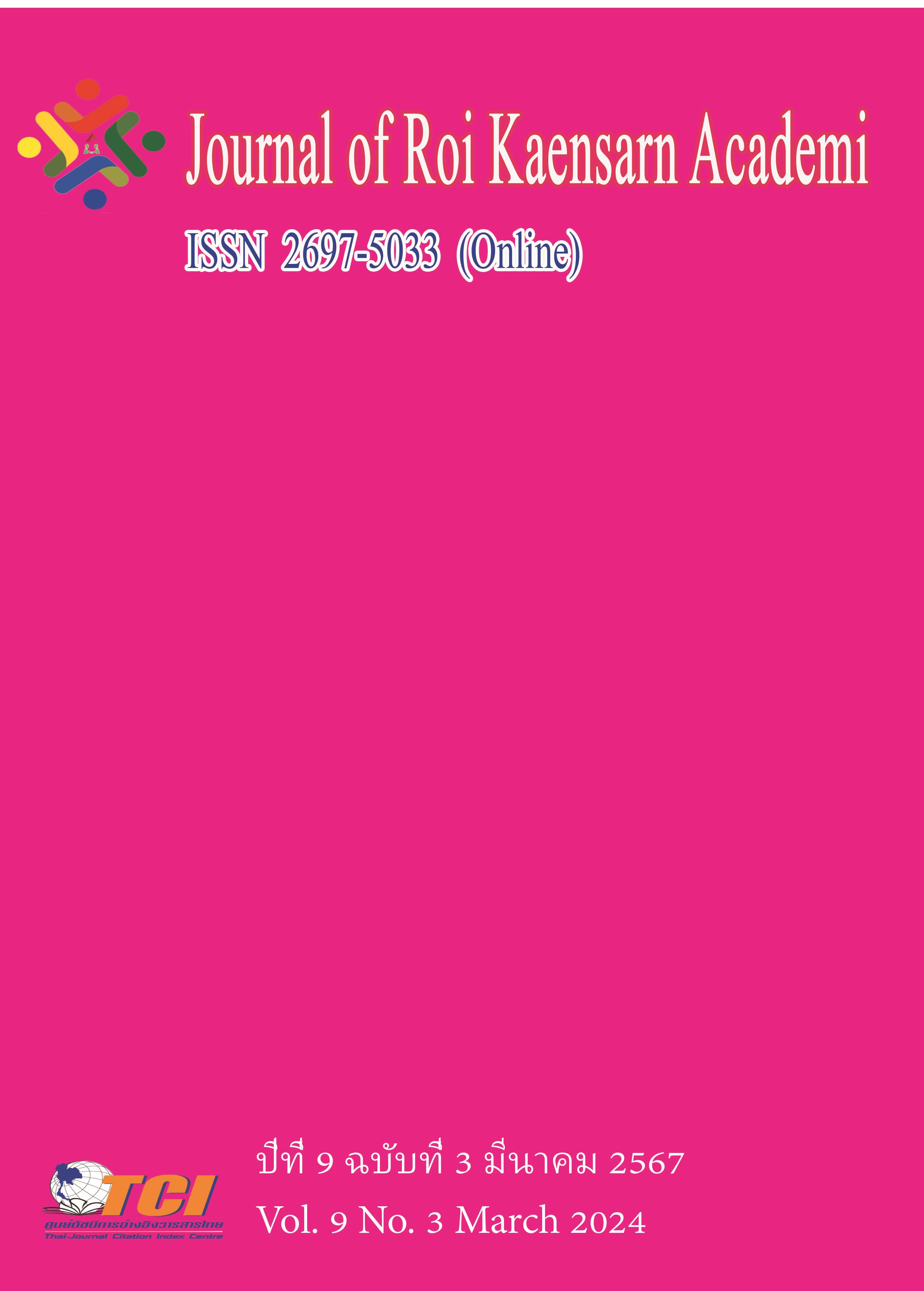The Guangfu Nursery Rhythm Guidebook for Student At Guangzhou College of Technology and Business, Guangzhou
Main Article Content
บทคัดย่อ
The objectives of this research were to study the Guangfu nursery rhyme and to construct the Guangfu nursery rhyme guidebook. The study uses a qualitative research method to understand Guangfu nursery rhyme and choreography rhyme creation. Three key information providers are interviewed, and their knowledge is used to create a Guangfu nursery rhythm guidebook. The guidebook will be developed from June to August, focusing on teaching choreographic students at the Guangzhou College of Technology and Business.
The research results found that Guangfu nursery rhymes are a traditional Cantonese folk music genre that reflects the life, culture, and values of local people. Three key informants offer guidance on the classification, characteristics, and significance of Guangfu nursery rhymes, helping to develop teaching materials. They suggest appropriate selection of dance elements and types, integrating local characteristics and cultural connotations, and ensuring the dance's fun and educational nature. The researcher used the results to create a content framework suitable for the Guangfu nursery rhyme guidebook, which covers various types of training, including activity training, orientation training, expression training, head training, shoulder training, hand training, crotch training, foot training, physical training, and comprehensive training. Expert evaluations were conducted to ensure the feasibility and practicability of the Guangfu nursery rhyme guidebook. The evaluation results from experts were at a very good level, with a score of 4.86 on a full score scale of 5.
Article Details
เอกสารอ้างอิง
Fang, X., & Han, X. (2022). Singing Lingnan•Guangfu Nursery Rhymes. Guangdong Higher Education Publishing House. 11 (02), 15-18.
Miao, B. (2023). Exploration of Local Nursery Rhyme Penetration Teaching Method in the Context of 3-6 Years Old Children's Learning and Development Guidelines: Taking Huizhou Hakka Nursery Rhyme. Curriculum and Teaching Methodology, 6 (4), 70-76.
Olga, Riabchenko. (2021). Use of choreography elements in the training process of novice athletes for the successful development of rhythmic gymnastics programs.
Osborne, N., & Grant-Smith, D. (2021). In-depth interviewing. In Methods in Urban Analysis (pp. 105-125). Singapore: Springer Singapore.
Sarah, Fdili, Alaoui., Kristin, Carlson., Thecla, Schiphorst. (2014). Choreography as Mediated through Compositional Tools for Movement: Constructing A Historical Perspective. doi: 10.1145/2617995.2617996
Wu, X., & Pan, L. (2023). Introduction: Multimodality in Translation Studies: Themes and Models. In Multimodality in Translation Studies (pp. 1-20). Routledge.
Xiaolan, X., Pattananon, N., & Chanthako, K. (2023). Teaching Guangdong Music in the Art Troupes, China. Journal of Modern Learning Development, 8 (6), 229-236.
Zhang, X., & Wang, Y. (2021). Windows and mirrors? Cultural authenticity of Chinese-themed children’s books. Educational Studies, 1-21.
Zheng, Y. (2011). Art Education Strategy for the Inheritance of Folk Nursery Rhymes. Art Contention, 11 (08), 171-173.
Zheng, Y. (2011). Research on the Inheritance Strategy of Folk Nursery Rhymes in. Contemporary Children's Education. Education Science, 11 (01), 10-13.
Zongyan, Qiu., Xiangpeng, Zhao., Chao, Cai., Hongli, Yang. (2007). Towards the theoretical foundation of choreography. 7 (5), 221-233. doi: 10.1145/1242572.1242704

